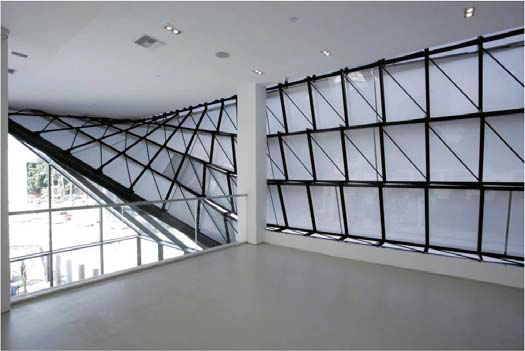By Guy Horton & Sherin Wing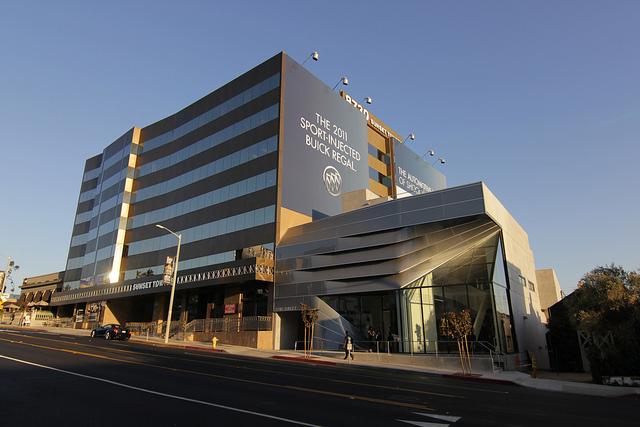
The architecture of PATTERNS, a Los Angeles-based firm run by partners Marcelo Spina and Georgina Huljich, is defiantly contemporary. This is so because their buildings derive not merely from other building precedents but from influences culled from the broader culture.
Thus, in talking about their design for the art gallery, Prism, we must consider PATTERNS' understanding of force: how the building references the body and how it affects the body. So rather than beginning with the structuring of space or aesthetic manipulations, let's begin with the building as evidence of force and movement and how it engenders feelings.
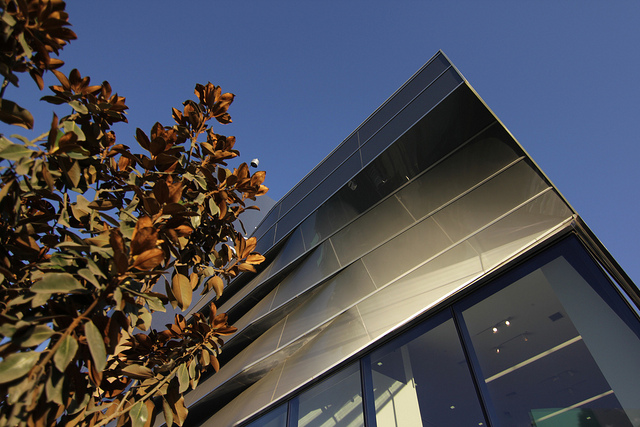
Ideally architecture not only moves people but affects how they feel in that space. In transforming space, architecture can transform the individual and shape collective experience. While not Frank Gehry's Disney Concert Hall or Thom Mayne's Caltrans District 7 Headquarters, Prism, tucked into a bend along Sunset Boulevard in West Hollywood, attempts something similar, albeit on a smaller scale. It transforms not just the external environment in which it is situated, but also influences the people who enter within.
It began with the mandate that the architecture could not overwhelm the art. But what has ensued from a two-and-a-half year collaboration clearly exemplifies how design can complement and enhance rather than overpower. Prism offers a decidedly unique approach to the standard trope of Los Angeles art galleries: minimalist stucco boxes with white walls and arty signage. In collaboration with the owners, PATTERNS re-energized a building to invoke the specific dynamics of its location while simultaneously transcending mundane expectations.
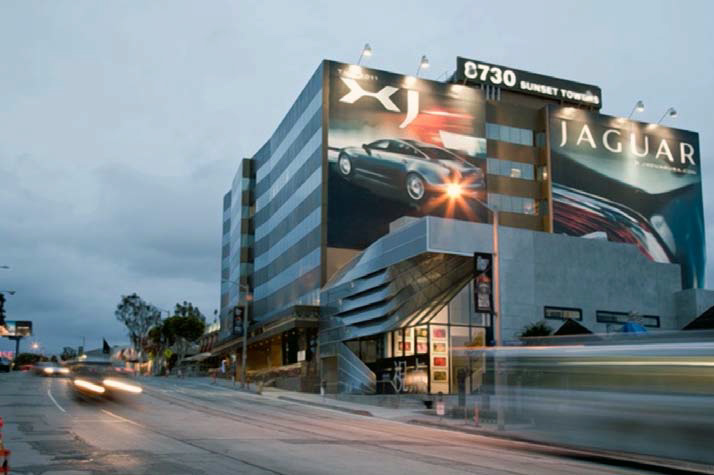
To that end, in what at first glance might appear to be a mere façade-ectomy, PATTERNS hearkens the torque and flow of Sunset Boulevard. Its twist and bend is not merely decoration. As Marcelo Spina puts it, they were invoking the bend in the road but also seeking to activate an otherwise mundane, boxy space. Mr. Spina noted how warping the ordinary produces a unique visual and spatial response to the surroundings.
Whatever the terms -- warping, bending, twisting -- the result is a transformed space. While the gallery's core is still regrettably recognizable as the "white box," the dynamic front end of the building challenges the basic nature of the boxy gallery with bending polycarbonate panels that sweep inward to define front door and peel away to expose a double-height atrium. The unrealized vision of an internal grand staircase pulling away from the bends of the façade would have extended the concept throughout the gallery. In the end, this was decided against by the owners. Perhaps it would have been too threatening to the art? On the contrary, a more total intervention into the center of the gallery would have drawn people in to experience the art.
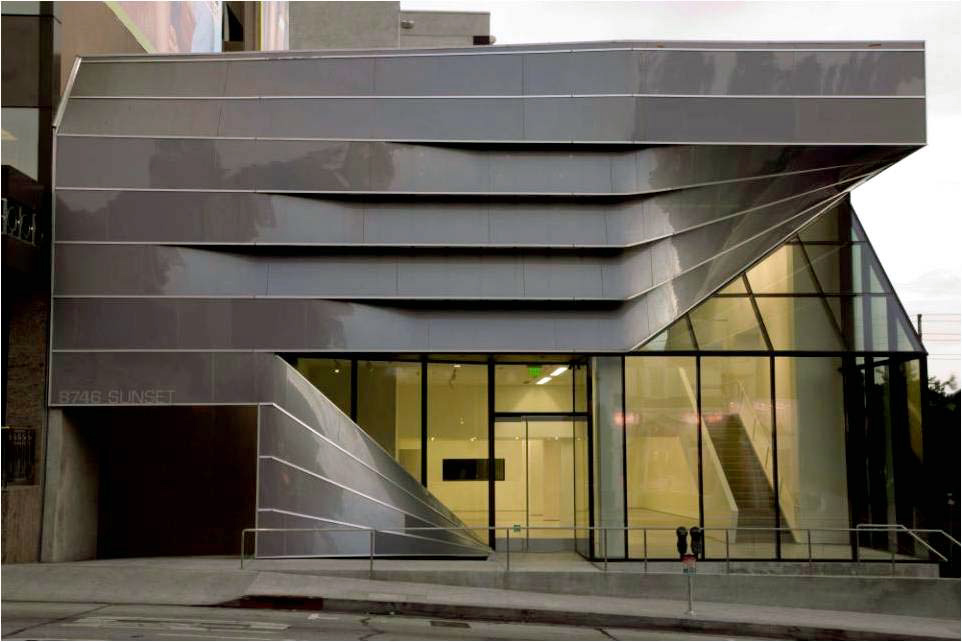
The polycarbonate panels, fabricated by 3Form, emphasize the uniqueness of PATTERNS' design: while they appear metallic and opaque in daylight, night creates a glow that not just illuminates, but seems to splash out onto the street. In fact, the architects worked directly with 3Form's engineers to produce what has become the first exterior application of this system in the US. The panels are an integral aspect of the design, filtering light deep into the gallery space by day and illuminating it like a beacon by night.
The collaboration of PATTERNS with Prism's gallery owners has given us a building that will likely challenge the future identity of all galleries, and not just in Los Angeles. The elimination of the staircase was a missed opportunity to further explode the white-box gallery trope, but PATTERNS' design has clearly shown that bold architecture and art can not merely coexist, they can mutually enhance.
